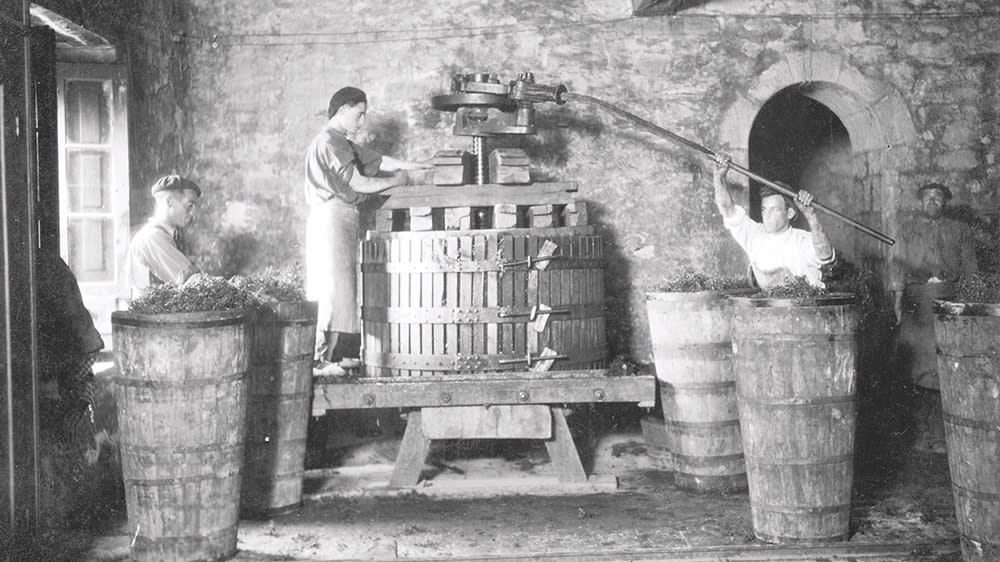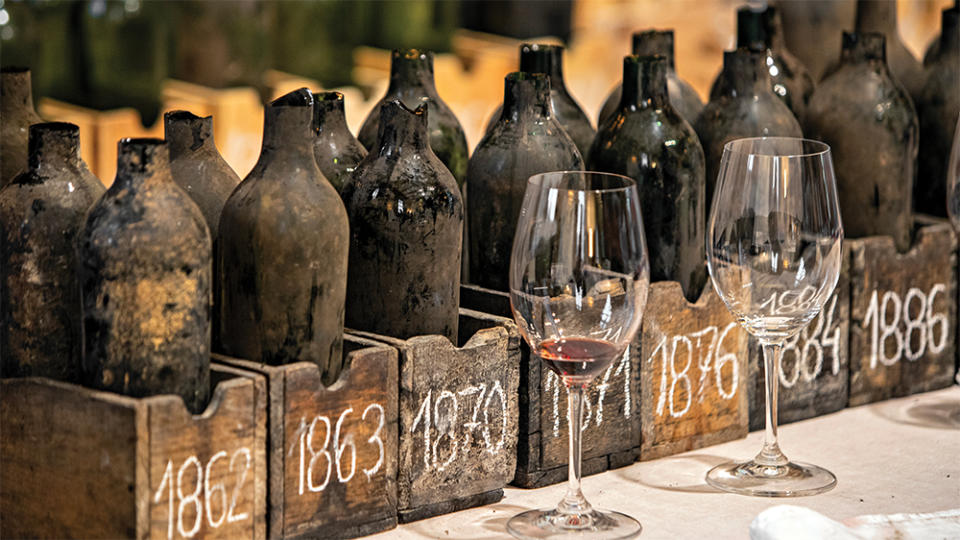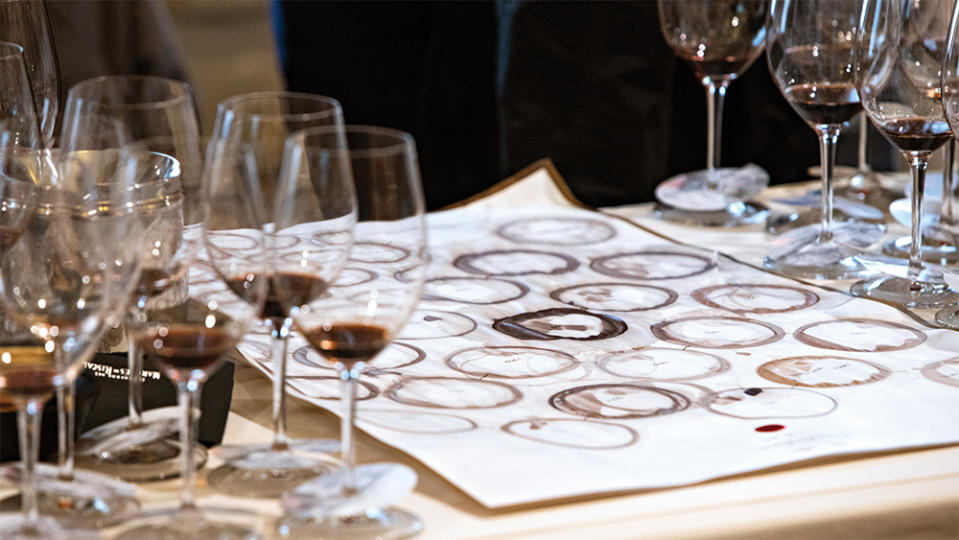We Tasted a Spanish Wine Made During the American Civil War, and It Didn’t Disappoint

Beware the buzz around “library vintages” and “re-release programs,” terms now tossed around with such abandon that they’re being used describe bottles that are a mere 10 or 15 years old. For the real deal, look to Rioja, whose wineries hold some of the oldest vinous treasures known to man—and where, this past September, Herederos del Marqués de Riscal hosted a marathon library tasting of 30 vintages from 1862 through 1964, including pre- and post-phylloxera examples.
Marqués de Riscal, with its Frank Gehry–designed hotel and sprawling “city of wine” complex, is among a handful of Rioja bodegas that helped usher the storied region into the modern era in the early years of this century (though its roots reach back to its founding by D. Guillermo Hurtado de Amézaga, in 1858). Its inaugural vintage, from 1862, is said to be the first wine from Rioja that was sold in bottles; prior to that innovation, the liquid was shipped in casks to merchants or sold directly to locals equipped with their own demijohns. And how does that 161-year-old wine drink? Incredibly, we had a chance to discover for ourselves: The opening vintage poured at the September tasting was that same 1862, bottled under the supervision of cellar master Jean Pineau as part of the Médoc Alavés movement, organized by Marqués de Riscal and six other local winemakers and subsidized by the Provincial Council of Álava (a sub-region of Rioja) which hired the French enologist for a period of five years, until 1867.
More from Robb Report
Inside a Contemporary $8 Million Wine Country Estate Tucked in a Luxury Resort
7 Estates That Make Perfect Homes for Wine Lovers, From British Columbia to Tuscany

Tasting exceptionally old wine is often fraught; while interesting from a historical standpoint, the actual liquid rarely lives up to the anticipation. Which made our pure enjoyment all the more unexpected while savoring the bricky (but still deeply colored) 1862, with its very good acidity and flavors of cranberry and pomegranate with touches of smoke, flint, tobacco and leather. Likewise an 1876 with bright fruit on the nose, high acid and notes of orange, dark chocolate and truffle paste and nice texture on the finish. Vintage after vintage, tasting through standouts from the annals of Marqués de Riscal’s 140,000-bottle archival cellar, the quality and the consistency of the wines poured were remarkable.
More so for the oldest vintages, made during the mid-to-late 19th century when there was no understanding of soil pH, let alone any scientific winemaking processes resembling today’s high-tech interventions. Their extraordinary longevity was due to the skill of the winemaker, the age of the vines and “the type of cultivated land, which was always the poorest in each area,” according to Francisco Hurtado de Amézaga, the winery’s technical director. Thanks to such factors, he says, “these wines had the ideal color structure, pH and acidity to be preserved for a long time.”

The powerhouse tasting was held in celebration of the release of Tapias de Marqués de Riscal 2019, which will be sold exclusively through La Place de Bordeaux, a network of merchants and collectors that has been operating for over 800 years. For most of its history, the collective offered wines only from Bordeaux but, in 1998, began selling some of the most renowned wines from around the world. In fact, Marqués de Riscal has a long history with Bordeaux, having cultivated Cabernet Sauvignon (blending it with Tempranillo) and selling its wines into the region since the 1870s, while its founder, de Amézaga, lived there from 1836 until his death in 1878.
Sourced from a single vineyard that traces its rootstock (via a series of graftings) back to the varietal’s original 19th-century plot, Tapias 2019 has flavors of cassis, black cherry, eucalyptus and dark chocolate, with a touch of smoke. While it’s drinking perfectly right now, Hurtado de Amézaga notes that “experience tells us that the wines from Las Tapias estate have a long life in the bottle—a minimum of 40 to 50 to 60 years.” Such staying power might sound incredible, but trust us when we say: Believe the buzz.
Best of Robb Report
Why a Heritage Turkey Is the Best Thanksgiving Bird—and How to Get One
The 10 Best Wines to Pair With Steak, From Cabernet to Malbec
Sign up for Robb Report's Newsletter. For the latest news, follow us on Facebook, Twitter, and Instagram.

